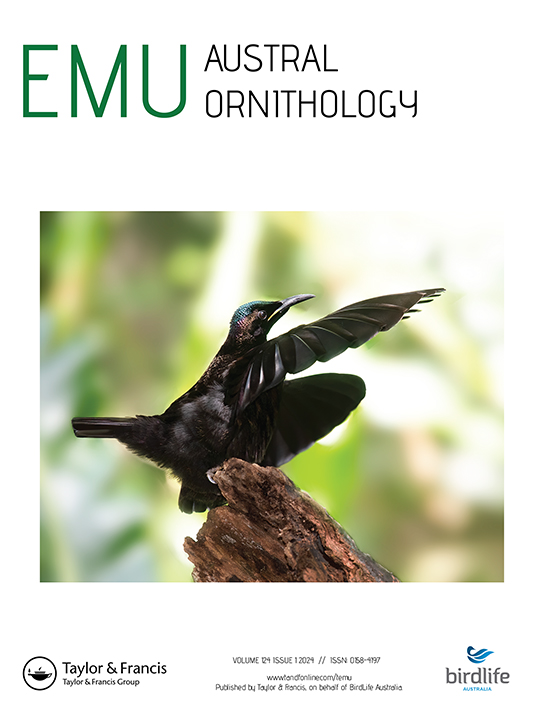
A special issue of the journal Emu – Austral Ornithology reports on Australian avian biodiversity over three decades of Australian threatened bird action plans between 1990 – 2020.
The edition contains nine open access papers on topics related to the edition’s theme, ‘Threats to Australian Birds’.
An extract from the edition’s Introduction, Trends and lessons from thirty years of Australian threatened bird action plans, by Stephen T. Garnett (Research Institute for the Environment and Livelihoods, Charles Darwin University, NT, Australia) and colleagues follows:
“International concern for declining bird species figured prominently in the formation of many ornithological, conservation and scientific organisations across the globe in the late 19th Century, including the Royal Australasian Ornithologists Union (now BirdLife Australia; Robin Citation2001). However, despite concerns about the rarity of some species being expressed repeatedly in the early years of the Union (e.g. Ashby Citation1924), little action was taken to prevent extinctions. As a consequence, it was only in the late 20th century that the first systematic attempt was made to document which Australian bird species were most threatened with extinction (Brouwer and Garnett Citation1990).
Shortly after this documentation, the Australian Federal Government passed the first national legislation targeting threatened species, the Endangered Species Act 1992. The government also funded the first action plans for Australian threatened species, including the first Action Plan for Australian Birds (Garnett Citation1992). This plan had two important consequences. First, it created a foundation of information on the extinction risk of Australian birds on which later assessments could build. Secondly, the Plan established the ultrataxon (monotypic species or subspecies of polytypic species; Schodde and Mason Citation1999), as the basic unit for Australian bird conservation action. Continued support from the Australian government and the ornithological community has since enabled three other Action Plans to be written at intervals of about 10 years (Garnett and Crowley Citation2000; Garnett et al. Citation2011; Garnett and Baker Citation2021). Each has improved on its predecessor, incorporating new knowledge and insights and expanding the range of sources of information.
It is on these four Action Plans and the data that underpins them that the current special issue of Emu – Austral Ornithology builds. These repeated reviews reveal trends not only in extinction risk to Australian birds but also about the threats they face, the extent of our knowledge and management and the directions Australian threatened bird conservation may go in the future.”
Reference:
Garnett, S. T., Burbidge, A. H., & Pruett-Jones, S. (2024). Trends and lessons from thirty years of Australian threatened bird action plans. Emu - Austral Ornithology, 124(1), 1–7. https://doi.org/10.1080/01584197.2024.2304903
Emu - Austral Ornithology, Volume 124, Issue 1 (2024)
Table of Contents
Trends and lessons from thirty years of Australian threatened bird action plans by Stephen T. Garnett et al.
Extinct Australian birds: numbers, characteristics, lessons and prospects by John C. Z. Woinarski et al.
Trends in Monitoring of Australia’s Threatened Birds (1990–2020): Much Improved but Still Inadequate by Simon J. Verdon et al.
Monitoring threats to Australian threatened birds: climate change was the biggest threat in 2020 with minimal progress on its management by Stephen T. Garnett et al.
Trends and patterns in the extinction risk of Australia’s birds over three decades by Alex J. Berryman et al.
Australian threatened birds for which the risk of extinction declined between 1990 and 2020 by Stephen T. Garnett et al.
Biological characteristics of Australian threatened birds by George Olah et al.
The feasibility of implementing management for threatened birds in Australia by Ross Crates et al.
Imperilled birds and First Peoples’ land and sea Country in Australia by Amanda Lilleyman et al.
Declining but not (yet) threatened: a challenge for avian conservation in Australia by Andrew F. Bennet et al.
24 April 2024

 English
English  Français
Français  Español
Español